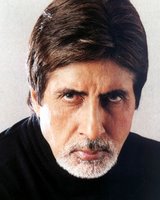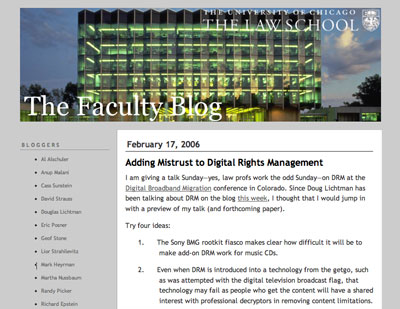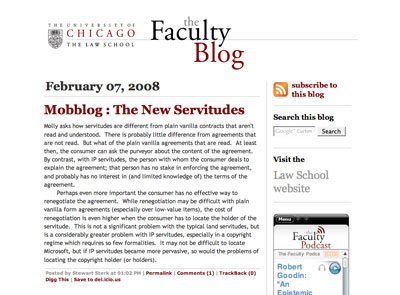In more Bollywood-related election news, it appears that Barack, like Shah Rukh before him, is going to give Amitabh a run for his money. Check out this video, which Gary was kind enough to send me. The funny part is that the dubbing on this is actually better than a lot of Bollywood movies.
iPhone = design porn
Yes, I’m coming to this party rather late — if I’m going to drop several hundred bucks on a gadget, I want to be sure that all of the bugs have been worked out before I do so. But about three weeks ago, armed with an Apple gift card that my wife gave me for my birthday, I finally took the plunge. And I have to say that — despite all the geeky hype and the fact that I’ve been a Mac user for fifteen years, and thus should no longer be surprised by anything they do — the iPhone has blown me away.
Sure, there are problems — AT&T’s Edge network really is as slow as people say, and if your fingers are larger than an eight-year-old’s you will spend a lot of time backspacing over typographic errors. But overall, the device is a joy to use. When you work with computers all day every day you constantly bump up against applications and devices that were obviously designed by programmers or engineers of some sort, and that are thus designed FOR programmers or engineers. The all-important empathic act — transporting yourself out of your own head into the head of a user with entirely different experiences and goals — is usually the missing step that could have made these products great.
But with the iPhone, as with most of its products, Apple puts the user experience first. It takes an extraordinary problem — how do you provide much of the functionality of a personal computer on a tiny mobile device? — and provides simple and elegant solutions. For this reason alone, the user interface is beautiful. But the real magic, as with all good design, happens in the details. Just as one example, consider the way the screen appears to bounce a little bit if you scroll quickly to the top or the bottom of the screen. This tiny detail, which on the surface seems gratuitous, pulls you into the tactile world of the interface, giving you the impression that you are interacting with a physical object rather than pixels on a tiny screen.
Amitabh 2008: Yes, he can.
 He’s back.
He’s back.
Amitabh (he needs two names about as much as Jesus does) has had many jobs over the years: Angry Young Man, (disgraced–er, retired) Member of Parliament, original host of the Indian version of “Who Wants To Be A Millionaire?“, Bollywood’s Elder Statesman-cum-Answer to Chuck Norris… and now, future Prime Minister of the United States. You might remember the abortive 2004 campaign by the guys over at Badmash to get him elected president (I still regret not buying an “Amitabh for America” t-shirt), but they’re apparently changing tactics this time around by making him run for a different office entirely. When Gabbar Singh calls at 3am, isn’t this the man you want answering the phone? He makes McCain look like Ralph Wiggum.
Of course, to me, Amitabh will always be Anthony Gonzalves, erstwhile drunk and Christian hero of possibly the greatest movie ever made. In honor of the upcoming Easter holiday, please see this clip as proof that while Barack Obama may sound like Lincoln, only Amitabh can pull off the stovepipe hat.
(Want to hear my remix of this song? Check out my music page or my GarageBand page.)
Actually, Make That 30 Seconds of Fame
A couple of weeks ago, I posted about being mentioned on one of favorite podcasts, Freelance Radio. Well, I am feeling the Freelance Radio love once again — “Walk On” by the Lost Cartographers was selected as the outro music for Episode 10. Thanks again to the crew over at Freelance Radio for the shout-out and for all their excellent work.
Designing With Your Ears
On a recent episode of Design Matters, Petrula Vrontikis said something that, well, made my ears perk up. When host Debbie Millman asked whether she preferred working by hand or working on the computer, Ms. Vrontikis responded that she works “mostly… with [her] ears.” Listening, she reminds us, is the root of design work — listening to what your client says, and translating that into a piece of visual work, is what good designers do.
Of course, what your client says and what they think they want may be two very different things, but we’ll leave that for another day.
Review: “The Laws of Simplicity” by John Maeda
John Maeda’s “The Laws of Simplicity” has been popping up on a lot of the best-of-design-books lists I’ve seen lately (see Speak Up, for example). I received a copy for Christmas, and recently buzzed through it during a couple of commutes (Maeda tells us the book was purposefully limited to 100 pages to allow just such quick reading — a prime example of form following function, I suppose).
The book is intended as a primer in the merits of simplicity for not only designers but also technophiles of various stripes and business leaders as well. The wide range of intended audiences also results in a style that is rather jarring for those used to a different style of writing about design — the book often feels like a mix of design criticism, personal anecdotes, and the often-mushy self-help language of “Jonathan Livingston Seagull”-type bromides intended for wealthy executives.
Another consequence of the wide range of audience is that many of the laws are fairly obvious to anyone with a basic grounding in the theory of design — groupings help communicate (Law 2, “Organize”), whitespace is good (Law 6, “Context”) — and they can all be effectively summed up (the ultimate in simplicity) in the final law: “Simplicity is about subtracting the obvious, and adding the meaningful.”
The one idea that did resonate with me in a way that had never struck me before was the idea that simplicity requires complexity (Law 5, “Simplicity and complexity need each other). He uses musical rhythm as an example: the simplest rhythms have their place, but are rendered far more effective in contrast with more complex ones. This is, of course, the very essence of something I am very passionate about: the writing and arranging of pop music. What makes a great pop song is often, the establishment of a pattern which is then suddenly changed (verse, chorus, verse, chorus, BRIDGE), or stood on its ear (building up to a chorus only to go back to the verse).
All told, “The Laws of Simplicity” is an interesting book if for no other reason than that it may give designers something to recommend that their clients read as a justification for why they really don’t need to make the logo bigger; most designers, though, will already have internalized most of these “laws” already.
My 15 Seconds of Fame
In an earlier post, I mentioned that one of my favorite podcasts is called Freelance Radio; it discusses all manner of topics relating to doing freelance work of any sort, from dealing with difficult client to drumming up new business. I just happened to listen to Episode 9 of Freelance Radio, which features a “Mailbag” question from yours truly about how the practical matters necessary to prepare oneself to freelance full-time (don’t worry, I’m not going to quit my day job just yet). Thanks to the folks at Freelance Radio, and keep up the good work!
Lost & Lonesome
Last Saturday, fellow Lost Cartographer Gabrielle Schafer and I played a short three-song acoustic set at the Charleston as the guests of the Long Gone Lonesome Boys. Aside from being incredibly nice guys, the Boys put on an amazing show, and the LGLBs’ John Milne was kind enough to give me a copy of their second cd, “Lonesome Time.” While the disc doesn’t quite capture the fun and energy of their live set, you should check it out if you enjoy 50s and 60s country along the lines of the Louvin Brothers or anything from Sun Records. Like fellow Chicagoan Robbie Fulks, the LGLBs provide this classic material with wicked wit and a decidedly 21st-century twist (e.g. one of their songs is called “www.lonesome.com,” and features the line “tired of Googling porn/and playing with my flugelhorn”). If you can catch them live, by all means do so — but if you can’t, you should pick up this record.
Project Update: Recent Design Projects at the Law School
While my day job as Manager of Electronic Communications at the University of Chicago Law School tends to lean more toward the tech and information architecture sides of web-work than the design side, I do occasionally get to undertake projects that use as much of the right side of my brain as they do the left (while our upcoming site-wide redesign promises to explode both sides).
Since starting the job in August of last year, I’ve had the opportunity to do a couple of these projects. The highest profile one so far was a redesign of our Faculty Blog, which had been launched in 2005 using a slightly modified version of one of Typepad’s standard issue templates:

When I redesigned it this past fall, my primary goal was to make it more usable — get rid of the gray text on a gray background, add a prominent search box and make it easier for visitors to subscribe to the blog and get to the Law School website. I also separated out the podcast feed and added a widget in the sidebar so people could listen to the podcasts without leaving the blog page.

I was very pleased to see a presenter at the CASE V conference in December hold up the redesigned blog as an example of higher ed institutions “using social media well.”
I also used this design as inspiration for a Flash e-card that the Law School’s Annual Fund asked me to create. Considering it was my first attempt at Flash, I think the card came out pretty well. This was an especially fun project because I had the chance to create the music for the card as well. The music for these things is usually classical music calculated to be almost unnoticeable. I used a collage of samples from Apple’s Garageband program to create a piece that sounds to me a bit like it could have come from “Six Feet Under;” I even had someone ask me where they could purchase a copy.
Bollywood Review: Yuva
As I mentioned in my first posting, I’ll occasionally be delving into Bollywood news and reviews on this blog… I just can’t help it. Once you go Bollywood, you can’t go back.
Last weekend we watched Mani Ratnam’s 2004 flick Yuva (the title means “Youth”). It was playing during the summer I spent in India, but I never had the chance to see it. As a big fan of Mani Ratnam (I spent a lot of time watching Bombay over and over for a research project back in the day), I was looking forward to this one, despite the lukewarm reviews I had heard from friends who did see it.
The story begins with an assassination attempt on a bridge in Kolkata, and most of the movie is told as a flashback of the stories of the three young men involved in the incident. Ratnam is no stranger to politics — his films have addressed political terrorism (Roja, Dil Se..
) and communal violence (Bombay), and he was himself the target of a terrorist bomb after the release of Bombay — and in Yuva he uses the three main characters to comment on today’s Indian youth and their political engagement (or lack thereof). Ajay Devgan is Michael, a student organizer who attempts to rally the local populace against a corrupt politician. Vivek Oberoi is Arjun, a happy-go-lucky recent graduate who wants to go to America to find good times and his fortune (Ratnam describes him as “the most MTV-ized” character in the film in an interview with, erm, MTV India).
The big surprise to me was Abhishek Bachchan’s amazing channeling of his father Amitabh‘s Angry Young Man role from the 1970s, but with a much darker and more disturbed air. His character, Lallan, is a petty thug who works for the politician that Michael is trying to defeat (he managed to win the Filmfare Award for Best Actor in a Supporting Role AND a Special Mention from the critics who vote for that award as Best Actor, but did not win “Best Actor in a Villainous Role;” even Bollywood’s awards ceremonies are dramatic). As in many of Ratnam’s films, the female characters are barely developed, though Rani Mukherjee does an excellent job bringing out the pathos of her role as Lallan’s abused wife (she too won a Filmfare award).
Much of the film (aside from the songs, which Ratnam had originally intended to omit) avoids the sumptuous color of usual Bollywood fare, in favor of a gritty, grayish patina. The songs, by frequent Ratnam collaborator A.R. Rahman, unfortunately fall far short of his previous work. He stretches for dance club hits and eschews the slightly more traditional elements that have always been his strength. Like the film as a whole, the music compares favorably to much of the Bollywood standard, but suffers by comparison to its creators’ earlier efforts. I suppose there are worse things to be cursed with than greatness.
